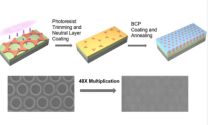More lithography
Ruilian New Materials: The company reserves a variety of photoresist material products, and some photoresist monomer materials have been mass-produced
Ruilian New Materials stated on its interactive platform that photoresist materials generally have longer customer validation cycles due to their more stringent requirements for metal ion content, impurity control, and water content. The company currently has a wide range of photoresist material products in stock, with some monomeric photoresist materials already in mass production and others in the customer validation phase.
It further stated that the company's semiconductor photoresist monomers are all customized products, some of which have already been mass-produced, while others are currently undergoing customer verification. Compared with display material products, the research and development and customer verification (pilot and mass production verification) of photoresist-related products are longer. Although the company's photoresist-related product revenue is relatively small at present, the company has a large number of products in reserve. As the number of verified products increases and gradually increases in volume, they will make a significant contribution to the company's overall revenue in the future.
Notably, Ruilian New Materials initiated its strategic plan as early as August 2023, planning to invest 491 million yuan in a photoresist and high-end new materials industrialization project. Implemented by its wholly-owned subsidiary, Dali Haitai, the project aims to meet the specialized production needs of hazardous chemicals and specialty products, further expanding the company's product lines and offerings.



